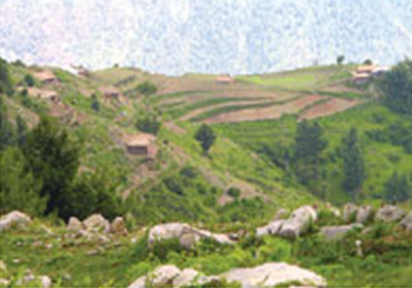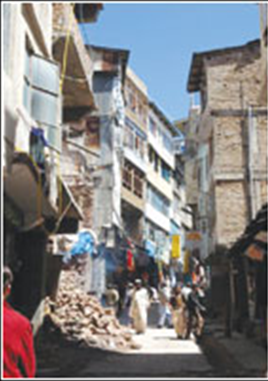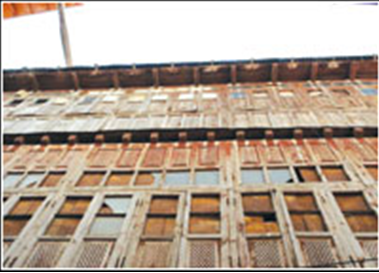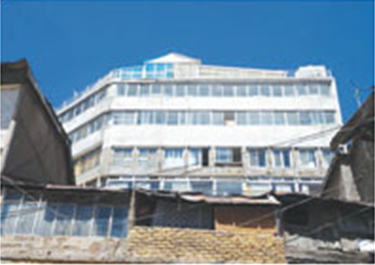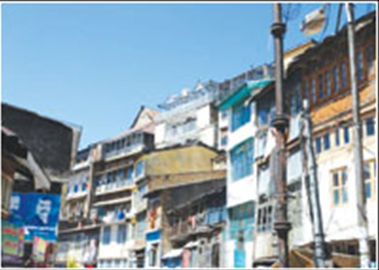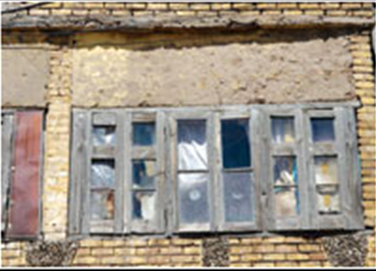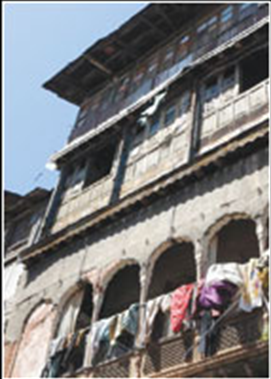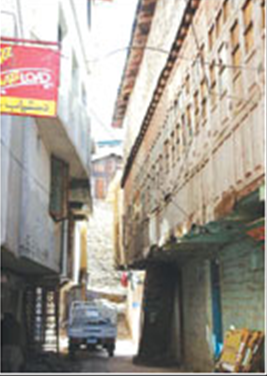Murree
This is a collection of articles archived for the excellence of their content. Readers will be able to edit existing articles and post new articles directly |
Murree
Murree area
An encounter with nature
By Mohammad Bilal Satti
Having spent most of the summer vacation in my hometown Rawalpindi, in the last week of July, I managed to convince my parents for a daylong outing.
Murree and Patriata were the ultimate destinations, being situated in proximity to Rawalpindi. So on one fine morning, we set out for a daylong tour to Murree popularly known as “Queen of the Hills”. The plan was to visit all three spurs of Murree i.e. Murree Spur, Charhan Spur and Phofandi Spur in one go.
The journey from Faizabad to Murree was fascinating, full of thrills, joy and excitement. As soon as the wagon crossed Rawal Lake, cool breeze of the mountains greeted us. Indeed the nature had begun to unfold itself step by step, in various shapes — vagrancy, fragrance of fresh air, colours of rainbow and mist of the monsoon, playing hide and seek in between high and low peaks — all very interesting and comforting to the eyes. Small bazaars alongside the road like Chhatter Park, Trete, Charra Pani, Company Bagh, Ghora Gali and Sunny Bank, to name a few, were all bustling with activity with a lot of tourists destined to Murree.
After a drive of an hour and a half, the wagon reached Murree motor agency. Once upon a time, I was told, it was a picturesque place, but ugly erections here and there have marred its beauty. Now it is known only for din of hawkers, wagon conductors, commission agents and the like to attract tourists/passengers. It is interesting to note that literature on Murree reveal that the first motor car took 14 hours to reach Murree, in June 1913. It may sound unbelievable, but it is a fact. However, since then much has changed. The road between Murree and Rawalpindi is excellent and could be counted as one of the best roads of Pakistan, though now it needs recarpeting at some places and plugging of crevices, caused by landslides.
Having reached Murree, Pindi Point was the first place to be visited. A chairlift plies between Pindi Point and Bansra Gali. On the way to Pindi Point, one can also see the tombstone of a saint known as Bib Mariam or Marian Bibi, situated on “Murree Ki Gali”. To many historians, Murree derived its name due to this place. The scenic beauty of Pindi Point is elegant as one looks at the picturesque western horizon, with lofty peaks of Galiats and far away MiraJani and Mushkpuri, masquerading to touch the blue sky.
Pindi Point is connected with its other edge, to Kashmir Point through the Mall Road — the only promenade of Murree. Many a big and quality hotels are situated at the Mall Road. Besides this, Iqbal Municipal Library is also situated on Mall Road. The visit to the library was a novel and refreshing.
The collection of books on all subjects is commendable; however, there is a dire need to allocate more funds for better management of the library. It also needs repair of the damage caused by heavy snowfall two or three years ago.
On the Mall Road, the busiest place is the post office chowk, also known as scandal point. Influx of tourists always keeps this place jam packed. From here three different roads lead to the Kashmir Point, which is the highest point of Murree. Between post office chowk and Kashmir Point, there are numerous hotels, motels, rest houses and lodges of various federal and provincial departments which remain packed to capacity throughout the season. Besides this there are President House, Governor House and rest houses of various embassies of the world.
However, the main attraction for tourists are six water ponds, which supply water to the city and cantonment area. When the British established their cantonment in Murree they encountered the paucity of water. In order to overcome this, they constructed these ponds to store the water. The water is carried from Donga Gali through a pipeline. Mr Tonlley, a British engineer, is credited for the construction of these ponds.
From Kashmir point, in a clear sky, one can see the river Jhelum meandering through the mountains of Azad Kashmir and far away Nanga Parbat in Gilgit, which always remain clad in snow. To the east of Kashmir Point, the other two spurs of Murree i.e. Charhan and Phofandi are facing it. Upper Topa is a culminating point of Charhan spur, which is a cantonment area and least visited by the tourists. There is also a rest house at Lower Topa. It is also the end point. of the expressway, which is now in its final phase of construction. It is expected that after completion, it will also lessen the distance between Rawalpindi.
The Dark Side of Murree
Text and Photographs by Z. N.
A stroll through the heart and soul of Murree is a step back in time –– the languid days of the late 1800s and early 1900s. This is where, in many respects, the pace and flavour of life has retained the truly laid-back essence of a hill station of yore.
A donkey on its daily round of milk delivery ambles down uneven cobble stones careful not to miss its step. A female resident of a fifth story apartment lowers cash in a basket attached to a rope to the shop keeper on the ground floor who measures out the requested amount of dal, tosses in a bunch of fresh dhania for luck, adds the lady’s change and tugs on the rope to signal the job is done and the basket ready to be hauled back up. Two teenage girls lean out of their respective fourth floor homes on either side of a narrow alley way, so close that they can pass a plate of biryani easily between them. A bare bottomed child squats over an open drain by an out of order Victorian standpipe as an old lady sits cleaning rice on her wooden doorstep. The narrow ribbon of blue sky visible between the towering buildings helps create an ambience which no longer exists less than a hundred yards away where life is a completely different phenomenon.
To the millions of visitors who swarm to Murree almost all around the year, ‘The Mall’ with its overdeveloped hotch potch of new buildings which have mostly replaced the old, and the garish display of low cost, local and imported ‘bling’ is the only place to be and they rarely, if ever, venture off this purely commercial, tourist highway.
However, directly behind the shops full of cheap toys, trashy jewellery, cut cloth, imitation designer gear and fast food joints is a parallel street leading to an absolutely parallel world…. the world of Lower Bazaar in which people have, so far, hung on to their traditions of hospitality, tolerance and a time honoured patience with the world around them. Offers of tea, of hot samosas with home made tomato sauce, of a plate of fresh fruit, of a chance to rest your weary feet and gossip for a while are the currency here rather than the money grappling hullabaloo of traders on ‘The Mall’ most of whose back to back buildings actually join on to the sadly dilapidated splendour of their Lower Bazaar neighbours.
The astronomical, all round differences between these two conjoined worlds is absolutely stunning but, at the same time, heart rendingly sad as, here and there, where decaying old buildings have collapsed through lack of attention, the new monstrosities are poking through, beginning to fill the gaps and the skyline with the blatant greed of uncontrolled profiteers.
Lower Bazaar, like Murree itself, was the brainchild of the British Raj whose agents purchased the ridge on which the town now stands from the local populace back in 1850. The British immediately set about constructing the hill resort of their dreams with classy bungalows being constructed at an amazing rate along with a few shops, churches and banks on ‘The Mall’. Locals were banned from the main street itself but as the newcomers needed the services of butchers, bakers, tailors, laundries etc. the Lower Bazaar came into being and the period buildings of the day, with their fancy woodwork and ironwork embellishments must have been a sight to see. As the years have passed though, these once proud façades have suffered badly from shameful neglect with many, if not all of them, now in a dangerously dilapidated state and, unless a serious conservation programme is launched, these historical monuments will soon crumble in to dust.



